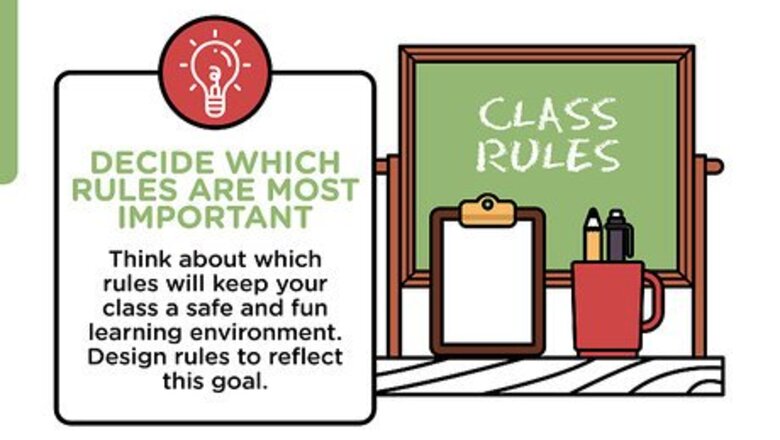
views
Working with Elementary School Classrooms
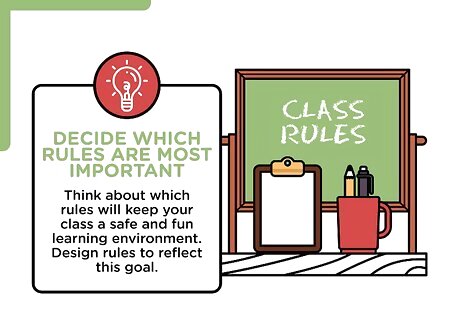
Decide which rules are most important. Think about which rules will keep your class a safe and fun learning environment. Design rules to reflect this goal. These rules will be different depending on the ages of the students and the type of class you’re teaching. Some sample rules might include: Treat others with respect. Take care of yourself. Take care of classroom property. Raise your hand to speak or to get someone’s attention.
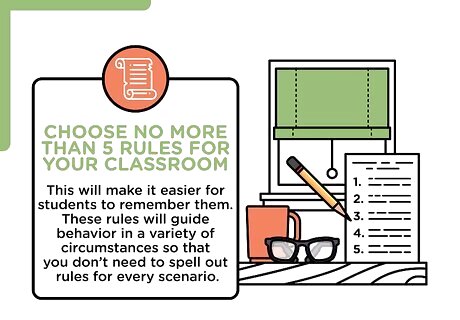
Choose no more than 5 rules for your classroom. This will make it easier for students to remember them. These rules will guide behavior in a variety of circumstances so that you don’t need to spell out rules for every scenario.
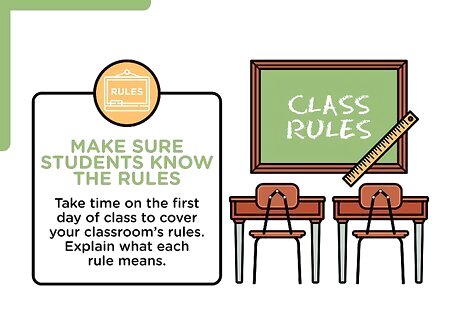
Make sure students know the rules. Take time on the first day of class to cover your classroom’s rules. Explain what each rule means. Give examples of how rules are followed or not followed.
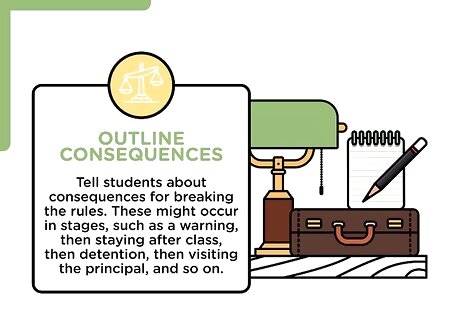
Outline consequences. Tell students about consequences for breaking the rules. These might occur in stages, such as a warning, then staying after class, then detention, then visiting the principal, and so on. You might include a time-out or break for younger students. Younger students who are disruptive may need to be removed from a situation for a few minutes to recover their attention. Then they can rejoin the class.
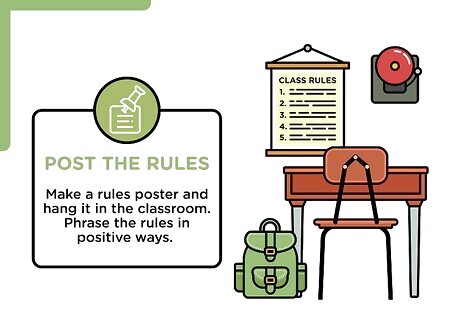
Post the rules. Make a rules poster and hang it in the classroom. Phrase the rules in positive ways. For example, instead of saying, “Don’t push other people,” you can write, “Treat others with respect.”
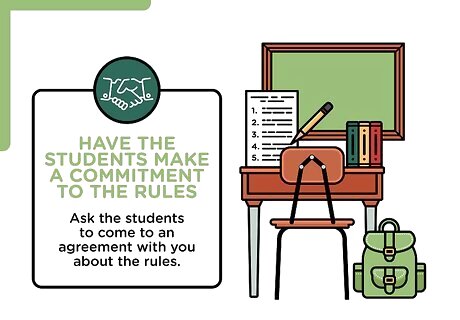
Have the students make a commitment to the rules. Ask the students to come to an agreement with you about the rules. They can sign a pledge form or even just raise their hands. In doing so, they will promise to uphold the class rules. Another way to get students to buy into the rules is for students to take ownership of them. Get their input when developing rules for the classroom. Take time every now and then to talk about the rules and review them with students.
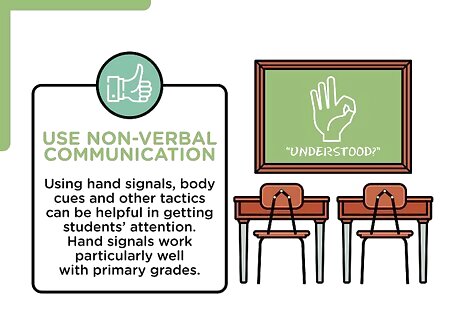
Use non-verbal communication. Using hand signals, body cues and other tactics can be helpful in getting students’ attention. For example, you might turn the lights off and on when it’s time to wrap up an activity. Hand signals work particularly well with primary grades. Changing the non-verbal cues periodically will keep students from getting bored with them.
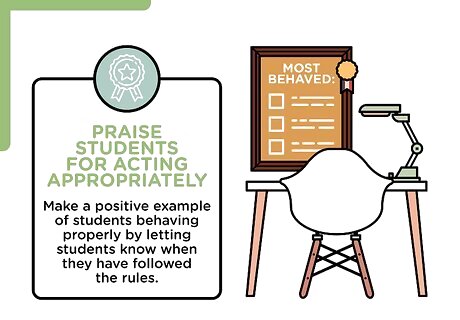
Praise students for acting appropriately. Make a positive example of students behaving properly by letting students know when they have followed the rules. By showing students what good behavior looks like, they will know how to model the behavior. Make sure to praise different students. Don’t always praise the same few students.
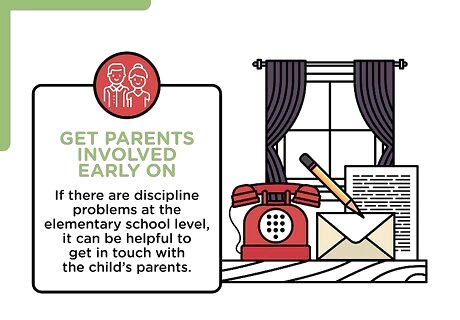
Get parents involved early on. If there are discipline problems at the elementary school level, it can be helpful to get in touch with the child’s parents. Think about doing this before the discipline problem becomes serious. Earlier intervention can redirect a child away from problematic behavior.
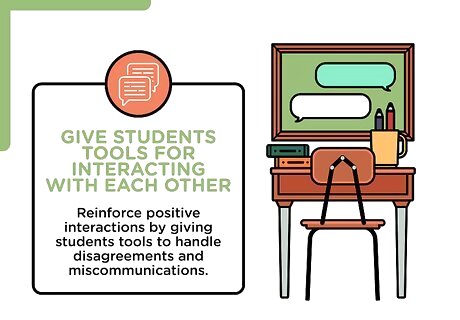
Give students tools for interacting with each other. Reinforce positive interactions by giving students tools to handle disagreements and miscommunications. Having tools to use for these interactions may help diffuse potential discipline problems. For example, talk about how students should ask another student for permission to take something. A student should look directly at the other student, wait until she is listening, and ask politely. Give students tools if they disagree with each other. For example, have students look calmly at each other and say, “I understand how you feel.” Then the student can explain his opinion calmly.
Handling the Middle School Classroom
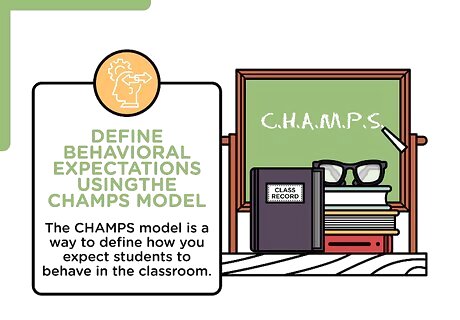
Define behavioral expectations using the CHAMPS model. The CHAMPS model is a way to define how you expect students to behave in the classroom. This approach works well for a variety of settings and learning goals. Use the following points as your guide for designing how students will complete an activity with good behavior and success: C – Conversation: Can students talk during this activity? With whom? About what? H – Help: How should students get your attention if they need help? A – Activity: What is the objective of the activity? M – Movement: Can students get out of their seats for the activity? P – Participation: How will students demonstrate that they are participating? S – Success: If students complete the CHAMPS expectations, they should be successful with the activity and good behavior.
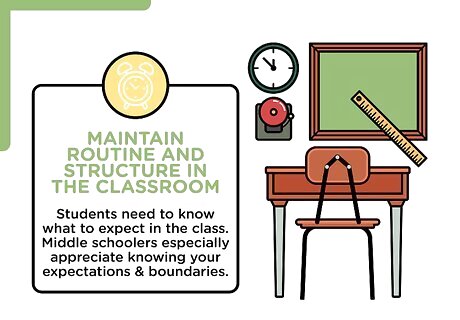
Maintain routine and structure in the classroom. Students need to know what to expect in the class. Middle schoolers especially appreciate knowing your expectations and boundaries. It is important to follow a routine. Keep your class relatively structured so that students know what’s coming next.
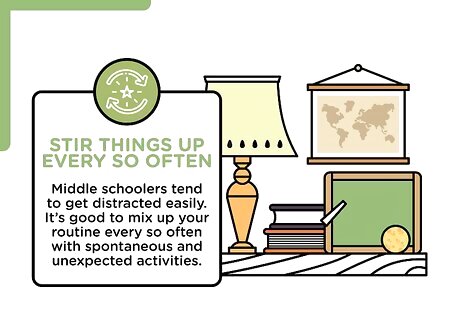
Stir things up every so often. Middle schoolers tend to get distracted easily. It’s good to mix up your routine every so often with spontaneous and unexpected activities. They appreciate active learning experiences that come out of the blue.
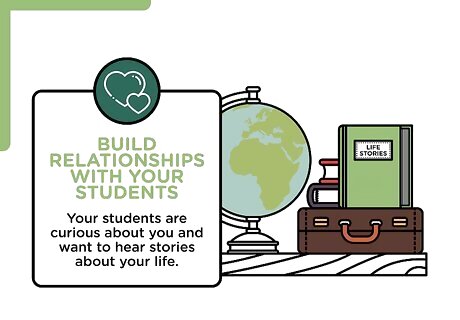
Build relationships with your students. Your students are curious about you and want to hear stories about your life. Don’t share everything, of course, but relating stories about yourself from time to time helps transform you into a human being that students can relate to. Likewise, get to know your students. If they feel that you’re invested in their interests, they will be more likely to respect you and behave properly.
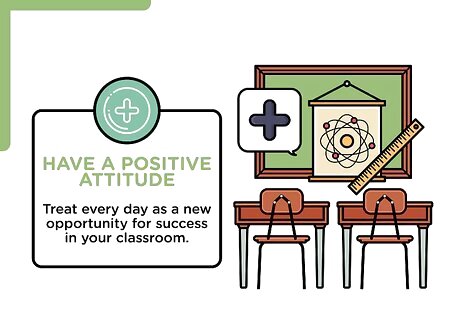
Have a positive attitude. Treat every day as a new opportunity for success in your classroom. Middle schoolers can swing wildly with emotions at this age, and having patience and positivity will make your job more enjoyable.
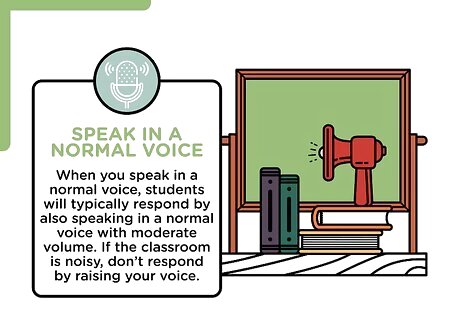
Speak in a normal voice. When you speak in a normal voice, students will typically respond by also speaking in a normal voice with moderate volume. If the classroom is noisy, don’t respond by raising your voice. Rather, you might start speaking in a normal voice so that the students need to quiet down to hear you. Or, you might wait to speak until the students are quiet
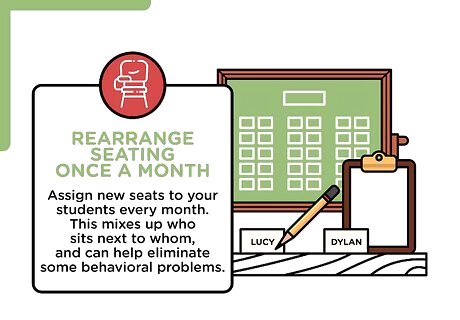
Rearrange seating once a month. Assign new seats to your students every month. This mixes up who sits next to whom, and can help eliminate some behavioral problems. Place a name card on each desk to assign seats.
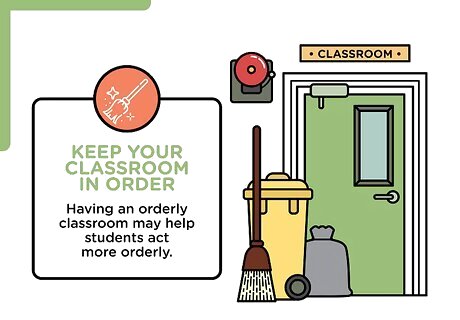
Keep your classroom in order. Having an orderly classroom may help students act more orderly. If the classroom is messy or disorganized, students may not take you as seriously.
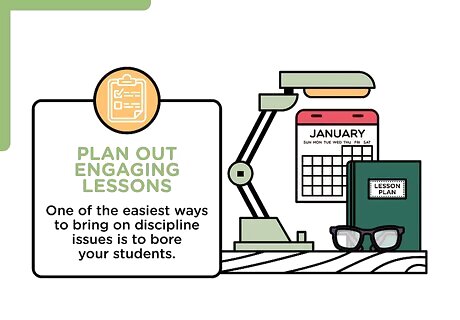
Plan out engaging lessons. One of the easiest ways to bring on discipline issues is to bore your students. If your lessons are unclear, disorganized, or not engaging enough for the students, they may lose attention. Keep students engaged and focused by delivering lessons that elicit interest.
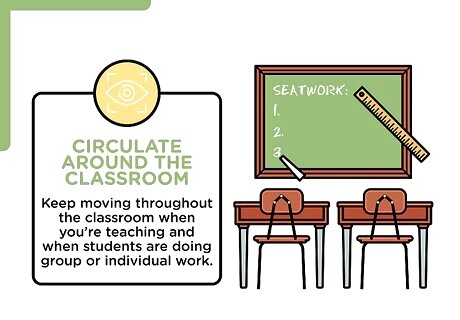
Circulate around the classroom. Keep moving throughout the classroom when you’re teaching and when students are doing group or individual work. Students notice that you’re engaged with their progress. Give hints to students as they work on problems.
Maintaining Discipline in High School Classrooms
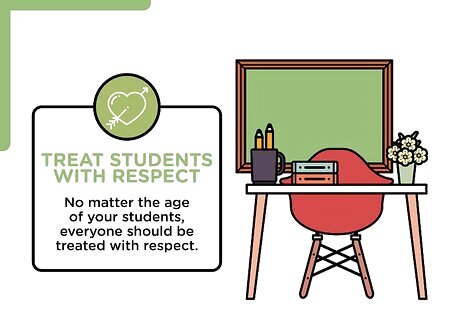
Treat students with respect. No matter the age of your students, everyone should be treated with respect. Your students are more likely to treat you with respect as well.
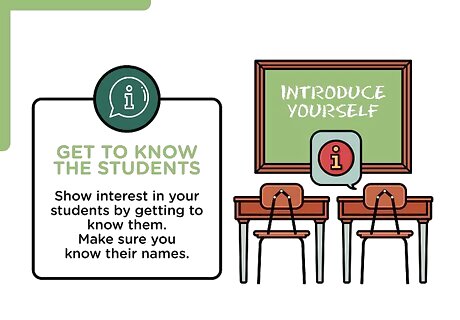
Get to know the students. Show interest in your students by getting to know them. Make sure you know their names. Find out other information about them by asking questions. Keep in mind, however, that you shouldn’t become the student’s close friend. It’s important to maintain a level of distance in order to preserve your authority in the classroom. Otherwise, a student may seek special treatment or favors, especially when dealing with a discipline issue.
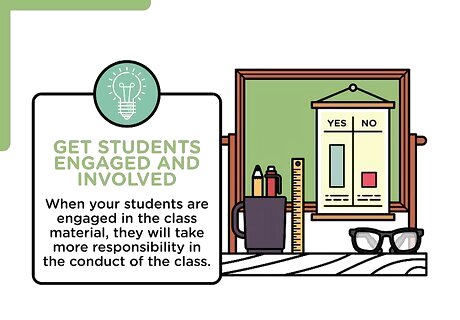
Get students engaged and involved. When your students are engaged in the class material, they will take more responsibility in the conduct of the class. Plan out interesting and engaging lessons and incorporate fun activities to keep up their involvement. For example, take simple polls in the class to determine how students feel about a particular issue.
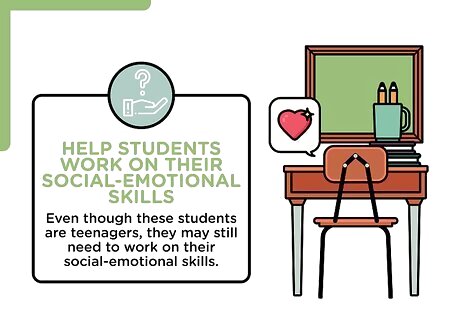
Help students work on their social-emotional skills. Even though these students are teenagers, they may still need to work on their social-emotional skills. Help students problem-solve their issues with friends and classmates. For example, if a student misbehaves or upsets another student, help this student come up with his own method of reparations that will be a meaningful solution.
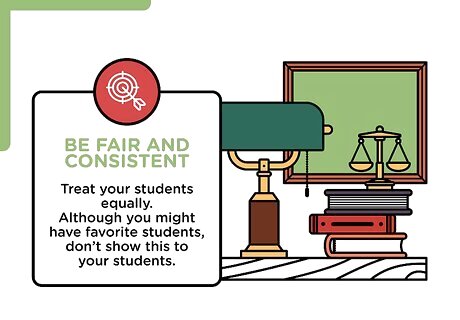
Be fair and consistent. Treat your students equally. Although you might have favorite students, don’t show this to your students. Apply discipline evenly across the board.
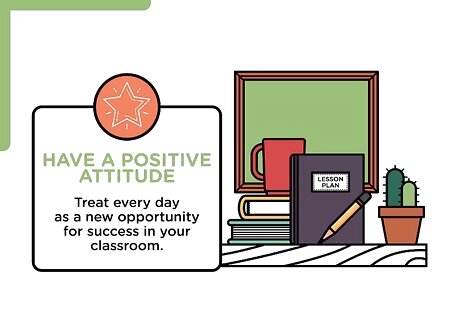
Have a positive attitude. Treat every day as a new opportunity for success in your classroom. Don’t assume the worst of your students.
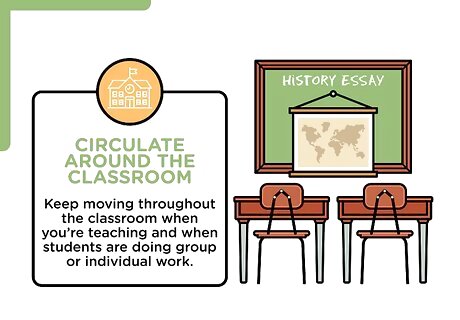
Circulate around the classroom. Keep moving throughout the classroom when you’re teaching and when students are doing group or individual work. Students notice that you’re engaged with their progress. Give hints to students as they work on problems.
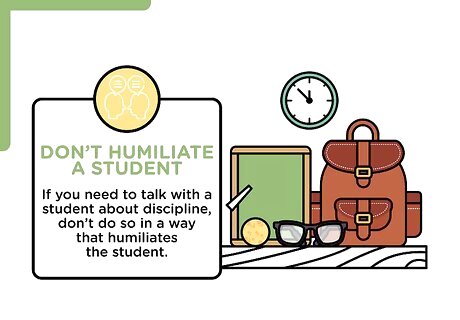
Don’t humiliate a student. If you need to talk with a student about discipline, don’t do so in a way that humiliates the student. Take the student aside or talk to him outside the classroom. Don’t use the instance as a moment to embarrass the student in front of his peers.
Managing a College Classroom
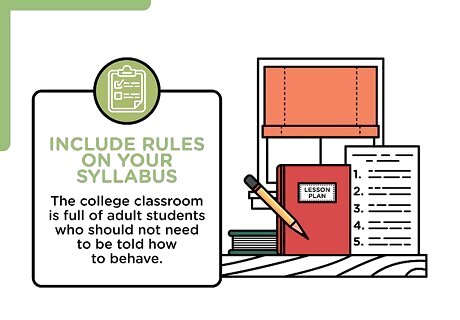
Include rules on your syllabus. The college classroom is full of adult students who should not need to be told how to behave. It is a good idea, however, to be very clear on your rules for your classroom. For example, you might include rules about participating in class discussions. This might include speaking respectfully to classmates and refraining from personal attacks. Also consider including policies regarding academic dishonesty, technology use, handing in assignments, and so on. Check with your institution to get proper wording on college-wide policies.
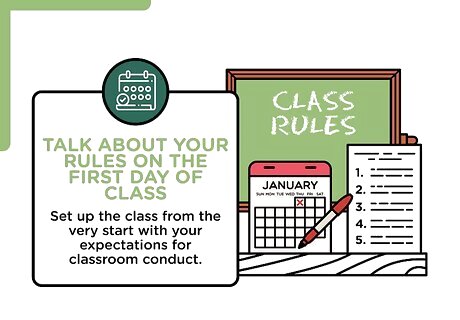
Talk about your rules on the first day of class. Set up the class from the very start with your expectations for classroom conduct. Give examples of how these rules are put into effect and how you will implement consequences.
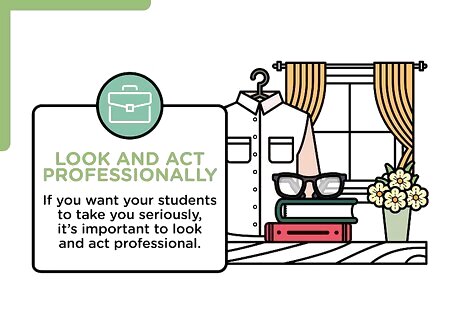
Look and act professionally. If you want your students to take you seriously, it’s important to look and act professional. Appearing too casual may make your students doubt your authority. Although you should maintain professionalism, you don’t need to be completely inaccessible to students. You can reveal things about yourself that give you more of a human dimension, so that students understand where you’re coming from.<
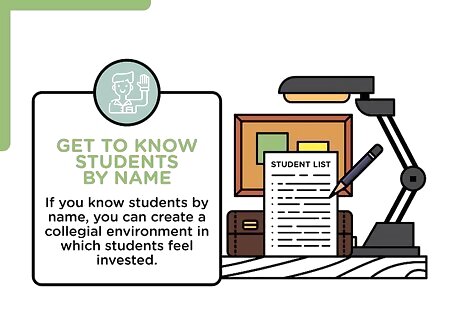
Get to know students by name. Oftentimes, the college classroom is a huge nameless group of students. This creates and maintains distance between the students and the instructor, which can make students feel alienated. If you know students by name, you can create a collegial environment in which students feel invested.
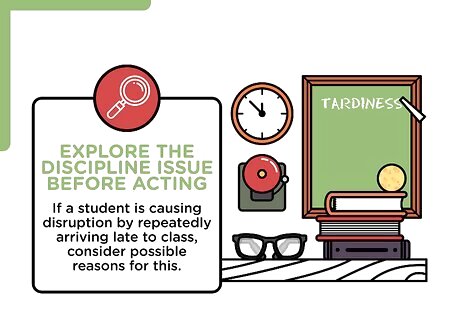
Explore the discipline issue before acting. If a student is causing disruption by repeatedly arriving late to class, consider possible reasons for this. Pull the student aside at the end of class or talk with him during office hours. It may be that the student is commuting from a job to school and can’t get to class on time. In this case, you might make a special exception or suggest that the student take a different class to accommodate his schedule.
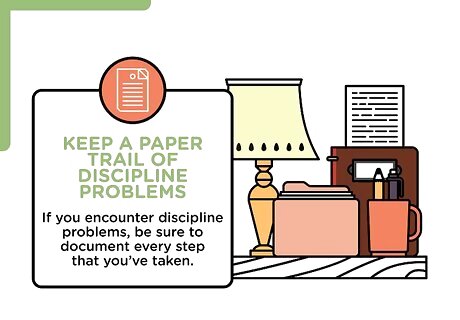
Keep a paper trail of discipline problems. If you encounter discipline problems, be sure to document every step that you’ve taken. Talk with your administrator or supervisor about your department’s appropriate procedure for handling discipline problems.
Handling Conflict in the Classroom
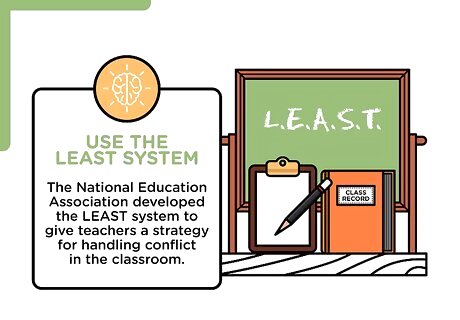
Use the LEAST system. The National Education Association developed the LEAST system to give teachers a strategy for handling conflict in the classroom. Start with the first step and, if necessary, move to the next step. Progress through the steps to deal with classroom conflict. L: Leave it alone. If the disturbance in the classroom is minor and will likely not recur, ignore it. E: End the action indirectly. When a student disrupts the classroom, let him or her know that you see their actions. Give a nonverbal sign, such as raising your eyebrows, waving your hand or walking toward him or her. A: Attend more fully. Ask the student to tell you about the issue. Ask what’s happening and who is involved. S: Spell out directions. Remind the student of the rules and consequences. Plan to follow through with consequences after you have warned the student. T: Treat student progress. Make notes about the discipline issue. Write down what happened, who was involved, when it happened, and what your response was.
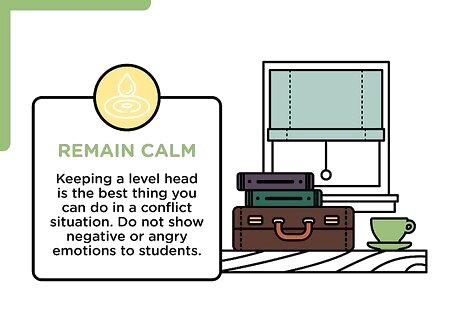
Remain calm. Keeping a level head is the best thing you can do in a conflict situation. Do not show negative or angry emotions to students. Instead, stay calm and collected. Talk in a normal voice. It may help to take a couple of deep breaths to calm yourself down.
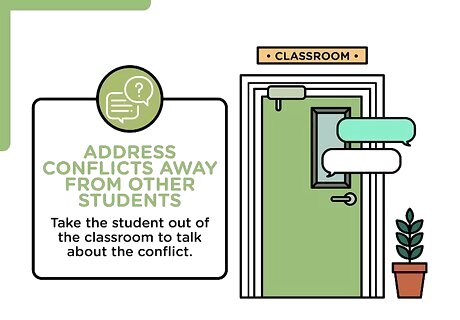
Address conflicts away from other students. Take the student out of the classroom to talk about the conflict. This will take the student out of the immediate physical situation. It will also remove him from his peers, who may be contributing to the discipline problem. Don’t involve other students in the conflict.
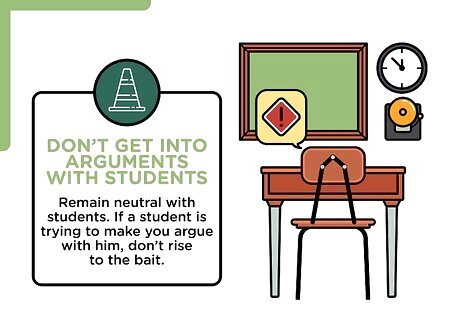
Don’t get into arguments with students. Remain neutral with students. If a student is trying to make you argue with him, don’t rise to the bait. Instead, maintain a firm yet calm stance. If the student continues to try arguing with you, say, “We will discuss this after class.” This closes down the conflict momentarily.
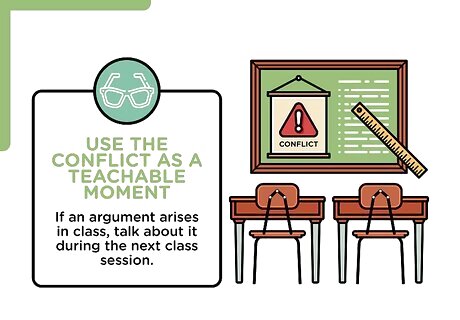
Use the conflict as a teachable moment. If an argument arises in class, talk about it during the next class session. Ask your students how they would have dealt with the argument. Have them think about how they can understand perspectives that they don’t agree with. This can work especially well when you are talking about sensitive issues in your class. If the discussion gets heated, ask students to take a moment to reflect on the issue in silence. Then ask them to reflect on why the discussion has gotten so heated. EXPERT TIP Ashley Pritchard, MA Ashley Pritchard, MA School Counselor Ashley Pritchard is an Academic and School Counselor at Delaware Valley Regional High School in Frenchtown, New Jersey. Ashley has over 3 years of high school, college, and career counseling experience. She has an MA in School Counseling with a specialization in Mental Health from Caldwell University and is certified as an Independent Education Consultant through the University of California, Irvine. Ashley Pritchard, MA Ashley Pritchard, MA School Counselor Our Expert Agrees: Turn the situation into a learning experience. Discuss how the student could have done things differently and what the outcome could have been. Help your entire class see the bigger picture.
Handling Angry Students in the Classroom
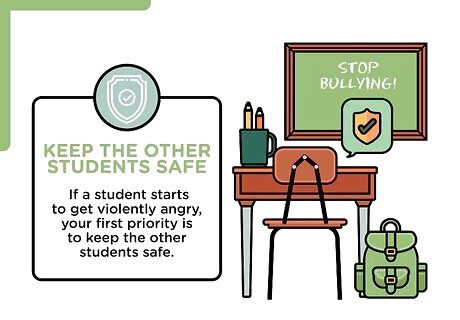
Keep the other students safe. If a student starts to get violently angry, your first priority is to keep the other students safe. If there is bullying going on in your classroom, learn strategies to stop bullying. You might think about dismissing the class early if the situation escalates.
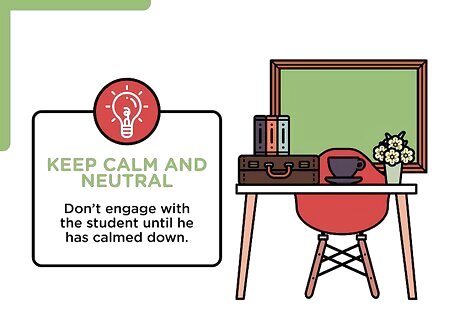
Keep calm and neutral. Don’t engage with the student until he has calmed down. Remain calm yourself, and don’t take sides.
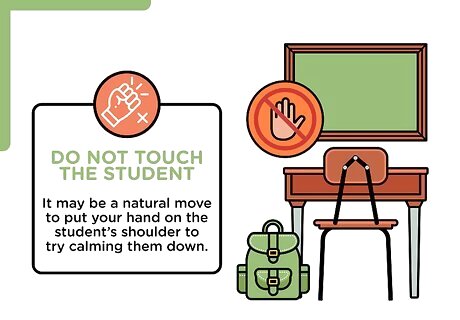
Do not touch the student. It may be a natural move to put your hand on the student’s shoulder to try calming them down. But when someone is angry, it is sometimes unclear what they may do in response. Maintain your distance from the student.
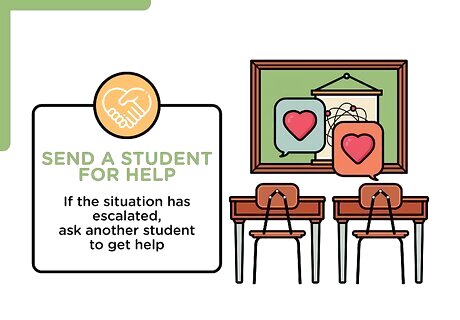
Send a student for help. If the situation has escalated, ask another student to get help. Having another teacher or person of authority may help diffuse the situation and can give you support.
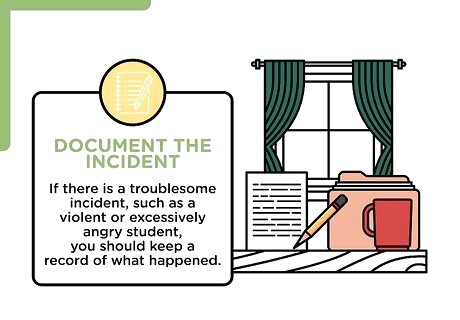
Document the incident. If there is a troublesome incident, such as a violent or excessively angry student, you should keep a record of what happened. Immediately after the incident occurs, write down what happened. Include details about what happened, when it happened, the names of those involved, and so on. Give a copy of this account to your administration. Also keep a copy in case a parent wants to see it.
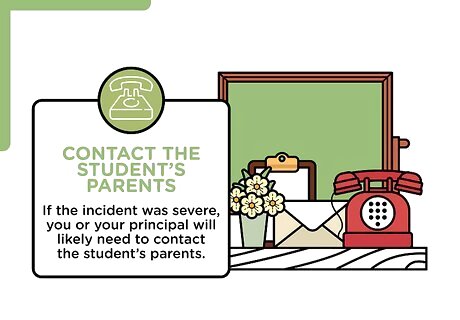
Contact the student’s parents. If the incident was severe, you or your principal will likely need to contact the student’s parents. Tell them the facts about what happened. Don’t add in your opinions. Stick to the facts.
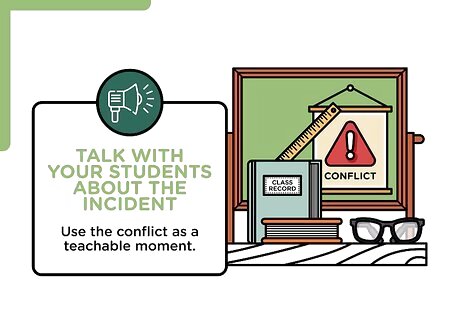
Talk with your students about the incident. Use the conflict as a teachable moment. This is also a good time to reassure your students that they are safe in your classroom.














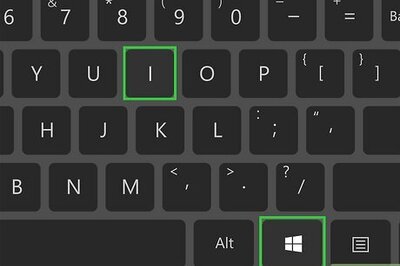


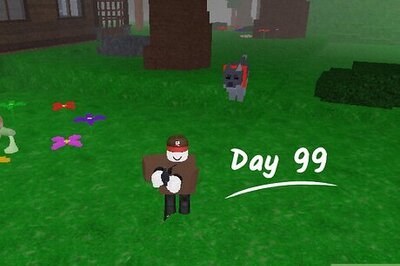

Comments
0 comment